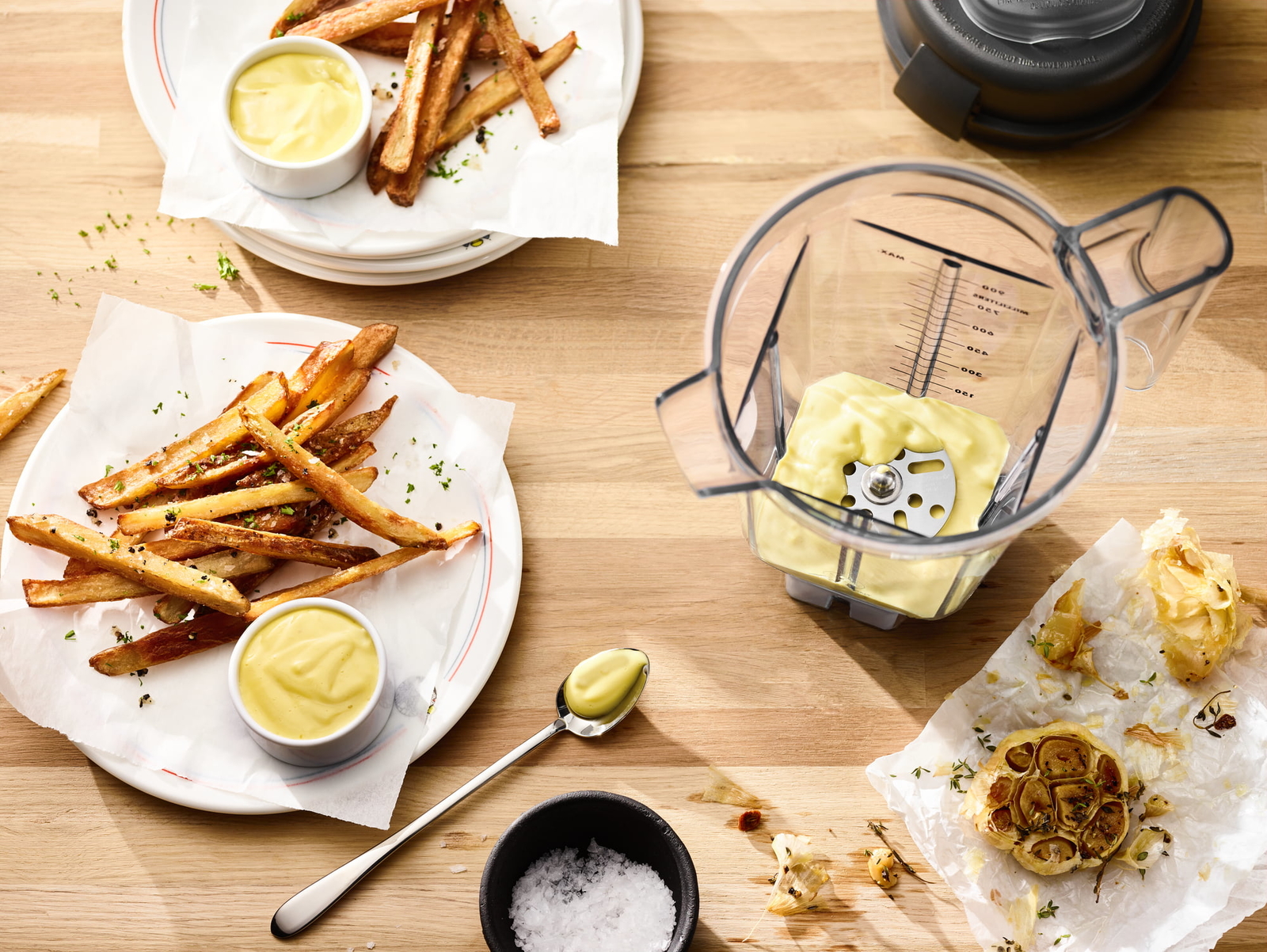Sponsored by Vitamix.
With rising labor and real estate costs, maximizing time and space in the kitchen are two of the biggest challenges faced by chefs and operators in the quick-service space. Preparing foods quickly, in high volumes, and oftentimes with low-skilled employees can put a lot of strain on a kitchen’s resources and detract from product quality and customer experience. It is therefore critical for quick-service establishments to implement equipment that can help mitigate these challenges. Successful brands have embraced high-performance machines that can perform multiple tasks and speed up processes.
“Whenever I speak with chefs, there are two very common problems that come up,” says Brian Harvanec, director of commercial product development for Vitamix. “One is time; they only have so much time during the day to get everything done. Another problem is space; they have limited areas to store machinery.”
High-performance blenders are helpful because they occupy relatively little surface area and can be stored on a shelf when not in use. In addition, they can be implemented to perform several different tasks in a short period, improving efficiency and consistency in a kitchen, and boosting employee confidence.
“It’s important to chefs that their support staff feels comfortable executing the vision they have for products,” Harvanec says. “If employees feel confident in what they’re doing, food comes out better.”
Here, we look at four creative applications of a high-performance blender.
1. Ingredient Prep
Using a blender to chop, mince, or shred foods is an efficient way to prepare large quantities of ingredients for use in dishes such as soups, pastas, salads, sandwiches, and salsa. In addition, a grating function lets the user prepare cheese—including parmesan, mozzarella, and cheddar—with precision.
“For a lot of chefs, getting the ideas for their menus isn’t the hard part,” Harvanec says. “What’s difficult is making sure it can be executed on a scalable level, and that it turns a profit.”
Using a high-performance blender to prepare ingredients is one way that chefs and operators can maximize production of a menu item, and ensure consistency of flavor and texture for every offering.
2. Emulsions
Increasingly, restaurants are attempting to differentiate their menus by offering house-made sauces, marinades, and dressings. Blenders can not only cut down on the time spent whisking and mixing ingredients by hand, but can also ensure the right blend is achieved each time, removing inconsistencies associated with human error.
“There are a lot of dishes, like a hollandaise or a vinaigrette, that require highly-skilled workers to make by hand,” Harvanec says. “But by taking the human element out of it, chefs can get a much higher level of precision and the ability to replicate it consistently.”
The emulsifying setting on a high-performance blender can incorporate oils into other ingredients more quickly and easily than if it was done by hand, and can blend other sauces to the correct consistency with less time spent on preparation.
3. Nut Butters
With peanut allergies on the rise, there’s a surge in consumer demand for nut and seed butters made from almonds, cashews, pistachios, sunflower seeds, and more. Using a high-performance blender, chefs and operators can differentiate menus by providing house-made butters that appeal to a range of dietary restrictions and taste preferences.
“Chefs are primarily concerned with durability,” Harvanec says. “When they’re shopping for equipment, they’re looking for companies that stand behind the machinery, both in terms of its functionality and its warranty. Operators are skeptical of new equipment that’s unproven, so they’re not just going to look for the latest bells and whistles—they need to know a piece of equipment will last.”
Blenders that offer durable blades and a grinding functionality that can help kitchen staff produce nut butters are useful for differentiating menus and attracting customers.
4. Desserts
From ice cream, sorbet, and frozen yogurt to whipped toppings and meringues, a high-performance blender can help chefs and operators to maximize their dessert offerings and truly differentiate menus from competitors offering the same old things.
“There is a new aerating blender container that takes traditional blending to a new level, opening up and expanding upon what the machines can do,” Harvanec says. “Locking air into ingredients helps to create whipped cream, mousse and meringue at a very high level—things that would otherwise take a lot of time and effort to produce.”
By implementing high-performance blenders into their kitchens, chefs and operators can ensure they are providing staff with a tool that contributes to maximum efficiency, and yet takes up little space.
By Erin McPherson













